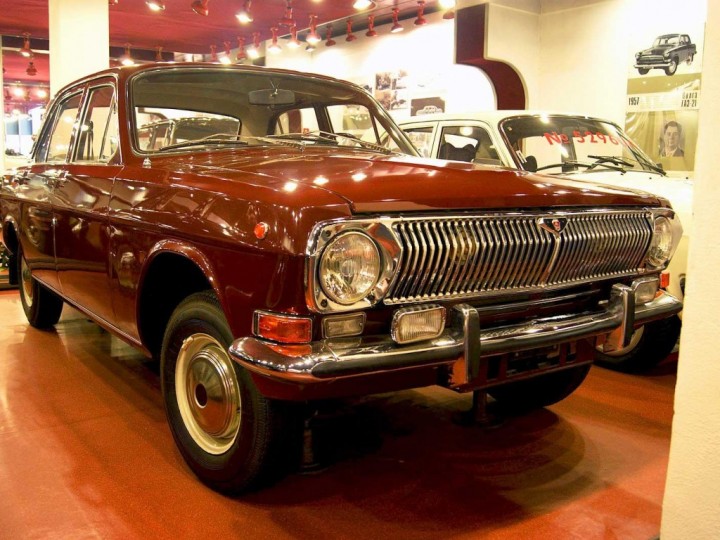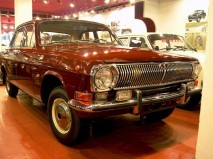1976 ГАЗ 24 "Волга"
The first series
Seats number - 5 people
Curb weight – 1,420 kg
Dimensions – 4,760х1,800х1,440 mm
Base- 2,800 mm
Engine – carburetor, 4-cylinder, 4-stroke
Engine power – 95hp
Fuel consumption – 10-13 l/100 km
Maximum speed - 145 km / h
Tire size - 7.35-14
Overhaul life – 300,000 km
Working engine capacity – 2.445 L
Manufacture years - 1970-1986
ru.wikipedia.org
“Volga” GAZ-24 is a Soviet medium car, manufactured serially at Gorky automobile plant from 1970 till 1985.
New important developments became:
Four-speed all-synchromesh at speeds forward gearbox;
Vacuum hydraulic power unit (a license copy of the unit Girling PowerStop) and a separator of brake circuits;
Wheel brake gears with automatic adjustment;
Forged baulk of the forward suspension;
Improved heating of the compartment with back windscreen demist;
A double-barrel carburetor (in the modifications with a carburetor engine);
14-inch wheel discs;
A park brake actuator for back wheels (the GAZ-21 had rather an unreliable transmission park brake);
Curved side glasses.
The main and the most fundamental difference from the previous model was the body, which was distinctive not only in design, but in a general ideology. It incorporated to the full extent all novelties introduced in the world practice of automobile construction during the period of 1955—1965. The critical distinction of the GAZ-24 body from the GAZ-21 body is a significantly less height of the first (1,490 mm versus 1,620 mm). The decrease of an overall height was one of the basic tendencies in automobile manufacturing at that time and bore not only cosmetic character — the height of the body defined a car configuration to a considerable degree. A lower automobile had a low-set centre of gravity, which enhanced a vehicle composure and handling, especially at a high speed. The passengers are less shaken in a low car, when it drives across off-roads. A lowered top provided more rational placement of passengers in a car and better aerodynamics at the account of cutting a body reference area, etc.
The second series: throughout 1976—78 there followed the first serious modernization of the GAZ-24, which we can consider as the starting point of the second generation production or the second series of the GAZ-24.
During those years the car received fog headlamps on the front bumper, rear lamps with built-in reflectors, a passenger compartment with changed interior and many other small improvements.
The car was produced till 1985 with minimal modernizations.



